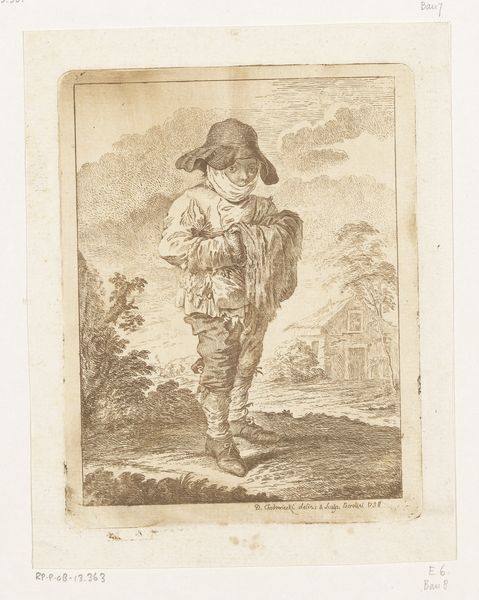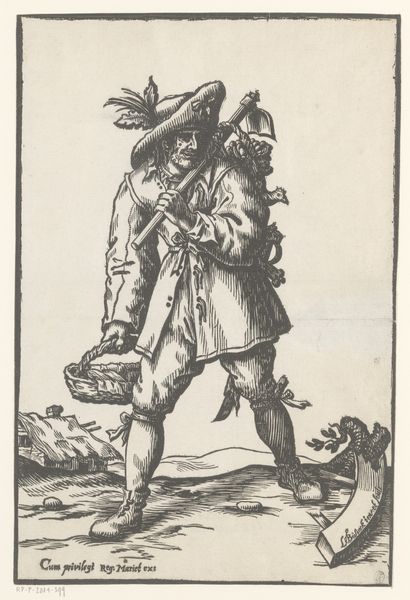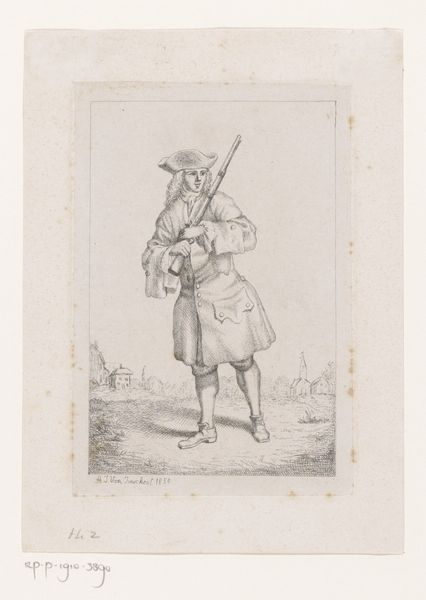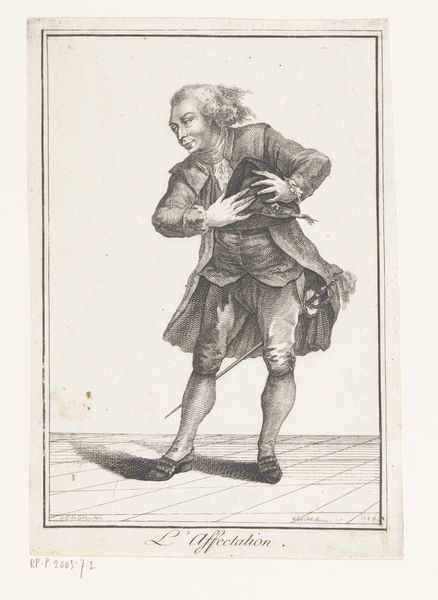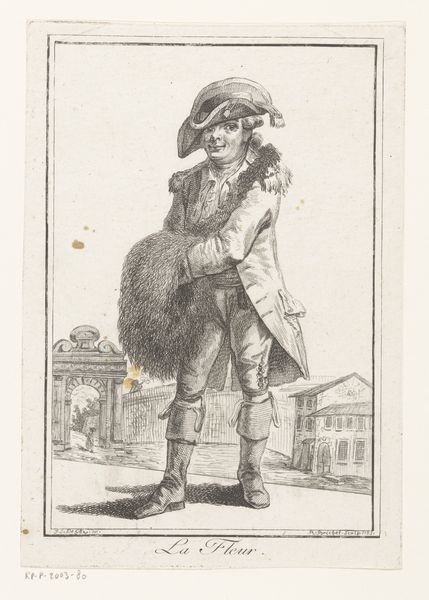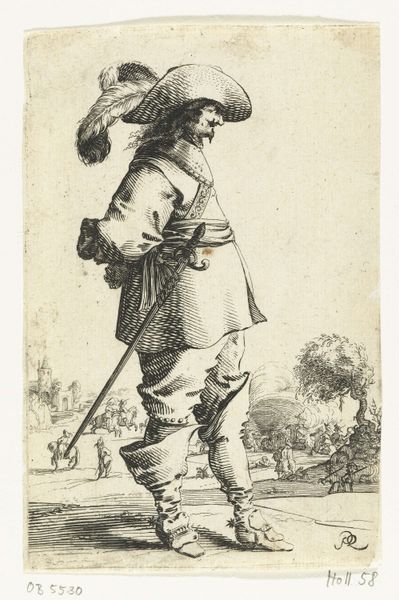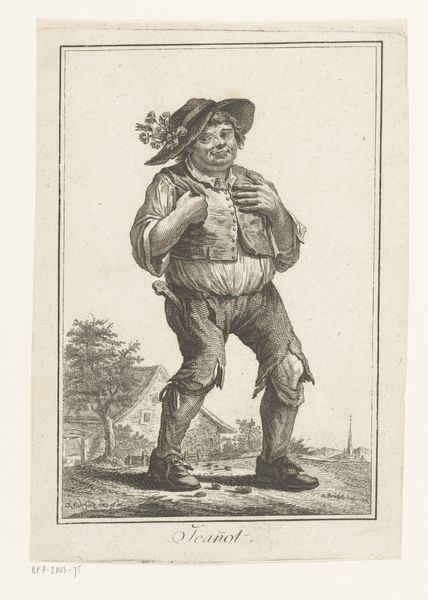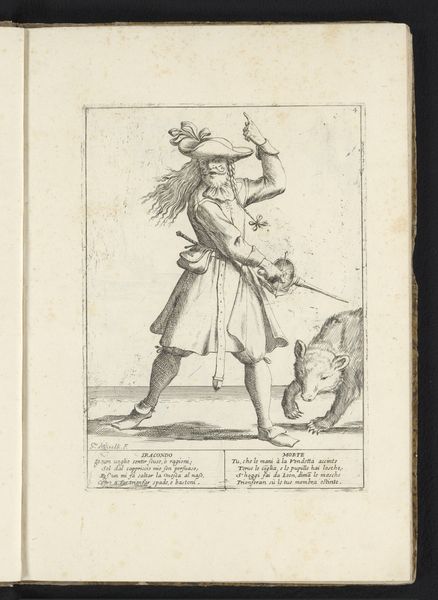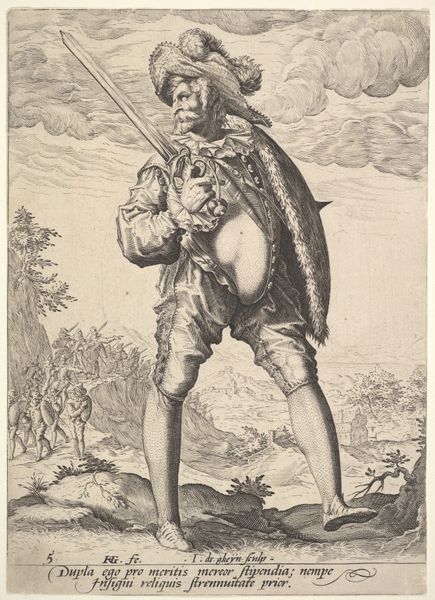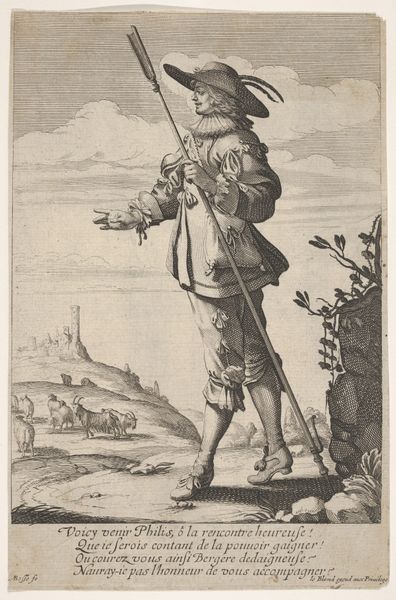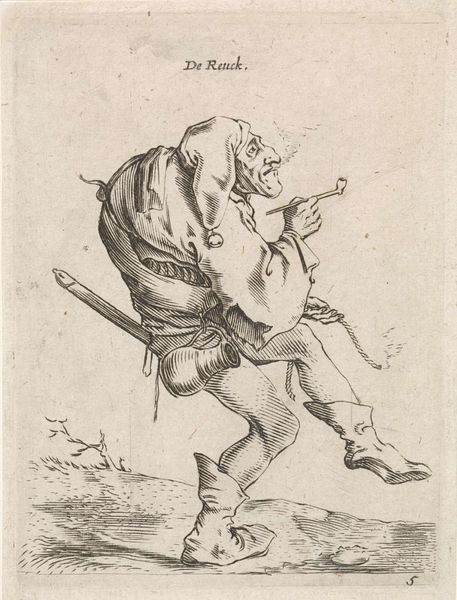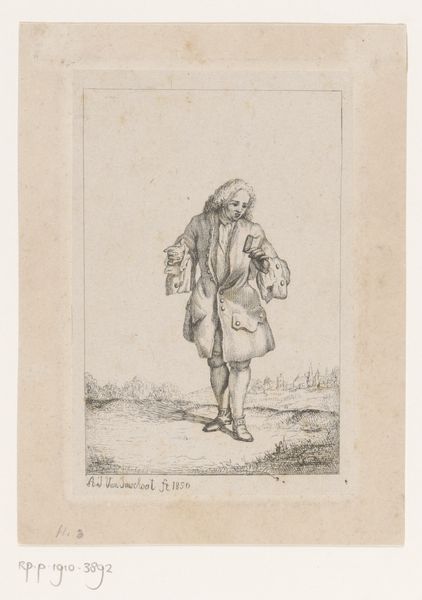
Dimensions: height 215 mm, width 153 mm
Copyright: Rijks Museum: Open Domain
Editor: So, here we have Robert Brichet's "Man met hoed en zwaard leunend op een stok", made between 1783 and 1784, an engraving from the Rijksmuseum. There’s something almost satirical about this character's confident stance. What’s your read on this work? Curator: What strikes me is how this portrait engages with notions of class and performativity during that era. Consider the figure’s flamboyant attire – the hat, the sword, even the cane – these aren't simply decorative; they’re markers of a particular social identity. Do you think Brichet is simply representing someone, or is he making a statement about the anxieties and artificiality of social roles at the time? Editor: That's an interesting point. The details do seem emphasized, almost exaggerated. Perhaps he's highlighting a certain… unease within that class structure? Curator: Precisely! Look at how the figure is positioned within the landscape, not quite blending in, but rather projecting a specific image. Could this be a comment on the constructed nature of identity? What philosophical angles do you see emerging from the period? Editor: I suppose thinking of it that way, through the lens of social commentary, gives it a completely different meaning than just a simple portrait of a man. It speaks to wider concerns. Curator: Absolutely. By examining these visual cues, and the broader societal context, we can delve into the complex intersections of class, identity, and representation in 18th-century art. I see it as an open challenge of how societal position can be affected and read in the arts. Editor: I see it now! It makes you think about the performance of identity and the role art plays in either upholding or challenging it. Curator: Indeed! And hopefully it encourages us to reflect on those same dynamics within our contemporary world.
Comments
No comments
Be the first to comment and join the conversation on the ultimate creative platform.
